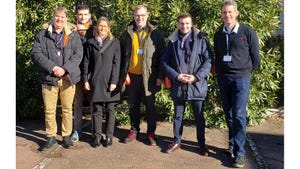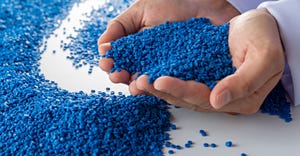Effective Medical Part Design: Part 2
June 3, 1998
Y-site design is the topic of this installment to the series from Eastman Chemical's Design Guide for the Medical Industry.
A Y-site is typical of many IV line parts molded in polyester and its alloys.
A typical design, Figure 1, can create processing difficulties down the line. Thick sections and sharp corners can be tamed by applying the rules of uniform wall thickness and radiused corners. Cooling the part will be difficult because two core pins meet directly under the thickest section where the two "tubes" come together.
Ends of core pins are always the hottest areas, and combined with the thick section, this design is bound to run into cooling- related problems such as voids, sink marks, and high molded-in stresses. Thin areas can serve as flow restrictors, making it difficult to fill and pack out the part properly.
Solutions (Figures 2 and 3) are in large-bore and small-bore categories. For large-bore Y-sites, the thick sleeve has been cored out into a series of ribs that can be formed without slides or side action by using a stepped parting line.
Core pins have been redesigned to meet away from the thickest section of the part, and wall thicknesses have been made relatively uniform. In the large-bore design, interior corners could not be rounded since a flat edge served as a necessary tubing stop. The small core pin in the Y-arm was difficult to cool, and caused some sticking during ejection. Adding two external bumps to provide support to the arm during core pull does the trick.
Small-bore Y-sites present additional challenges. The thickness transition increases where the two core pins come together, making the area susceptible to sinks or voids if not packed properly. It is often difficult to seat and seal these pins, which expand and contract during molding and may be prone to galling. This area needs to be periodically inspected for flash.
You May Also Like


